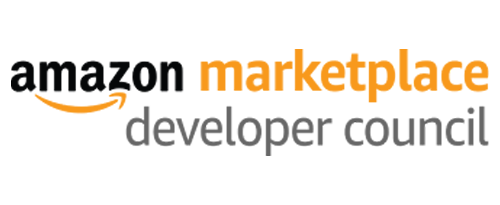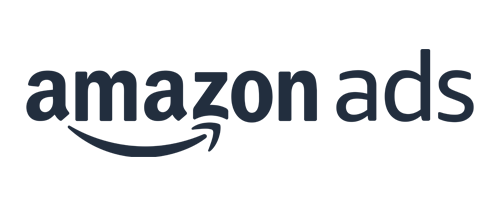We all know the saying, “Imitation is the sincerest form of flattery.” You see it all the time in business: Amazon notices that All Birds sneakers are taking off, so they create a similar product for less money. You may have even gotten the idea to start your business from looking at an aspirational competitor.
Keep in mind that your aspirational competitors are different from your realistic competitors. Both are extremely important and will help you strive and grow in your business.
Realistic vs. Aspirational Competitors
The question at the top of your list is likely, “What’s the difference?”
Realistic Competitors are those you are most likely competing with on a day-to-day basis. You have similar geographic reach, pricing, sales volume, etc.
Aspirational Competitors are those that you aspire to be one day. They’re the “breadwinners” in your industry, likely with known brand names and the majority of the market share.
You’ll need to keep a close eye both on your realistic competitors and your aspirational competitors as your brand grows. If you have big plans for your brand (as we all do), remember to strive for greatness. Everyone you would say is an aspirational competitor started small. We all know this picture of Jeff Bezos from the early days of when he was just starting Amazon:

Now, he’s one of the richest people alive who has just stepped down as CEO of one of the most successful global eCommerce companies known to man.
What can I learn from Aspirational Competitors?
To start off, let’s key in on one imperative word from that question: Learn.
In speaking with brands, we’ve noticed how often they will just do before considering how or even if it’s right for their brand to do.
Seller Labs’ VP of Marketing, Jeff Cohen (not to be confused with Amazon’s Jeff Bezos) has a story that’s the perfect example of this. Seller Labs was at a trade show a few years ago. There was a speaker on stage talking about their success with Halloween inflatables. You could see the wave through the audience as attendees started trying to source Halloween inflatables. It worked for the person on stage, so why won’t it work for them? It’s why markets like garlic presses or fidget spinners got so saturated so quickly.
Subscribe!
This is the first thing you should do as you’re monitoring your aspirational competition. Subscribe to everything. Join their email list. Follow them on social media. If they have a blog, scroll through it often. Your inbox and newsfeed will keep you up-to-date on all this brand is doing.
Learn a brand’s reactions.
We are living in a time of many social movements and reforms. How a brand reacts or anticipates these changes can say a lot. Shoppers often want to support a brand who supports a cause. If they can connect with the brand on a more personal level, they’re more likely to come back for repeat purchases.
Victoria’s Secret is actually going through something similar right now. They’re working on saying “goodbye” to the Angels, and welcoming in activists instead. They’re trying to focus on body positivity. However, a brand who has so long placed focus on “model” women will have a hard time convincing the world their brand is truly changing. If you do elect to stand for a cause or pivot your approach, be sure you’re being genuine, not just jumping on the bandwagon.
Do your aspirational competitors take a clear stand on certain issues? Are they outspoken or more subtle in their support? Do they tend to stay neutral? This could be everything from Mother’s/Father’s Days to politics to carbon neutrality.
From there, where do you want to be? Will you be outspoken? What social causes do you care about?
If you’re unsure of how your audience will respond, take a look back at your buyer personas. What do they care about most?
Watch their promotions.
When it comes to aspirational competitors, you also need to watch how they handle promotions. This is a combination of holiday sales, email offers, and even everyday promotions.
For example, a store like Hobby Lobby always runs sales. Additionally, they always offer 40% off coupons. Thus, if you ever pay full price at Hobby Lobby, you’re shopping wrong.
On the other hand, there are brands like Cards Against Humanity. For a Prime Day sale a few years ago, they actually raised the price of their products. They’re secure enough in their brand that they don’t need to “give in” to sales holidays in order to grow.
Once you see the promotional trends of your aspirational competitors, where will you fall? Are you going to constantly have an offer on your products or website? Will you just do discounts for tent pole events?
Knowing what will work for your target audience requires ample testing! Remember, just because something worked for Patagonia does not mean it will work for your startup outdoor wear company.
Here are some great tactics to try:
- Offer a coupon to anyone who joins your mailing list on their first purchase.
- Run a sale on your “slow days” to boost both traffic and conversions.
- Host a contest or giveaway on social media to increase audience engagement.
You may learn that your audience is promotion driven. It may result in you increasing the price of your products by a couple of dollars to consistently offer coupons and promotions (in order to still maintain a profit).
Check their branding.
The strongest brands are those that are the most absolute. These brands know their target audience and buyer personas. The brand is clear in everything from product packaging to social media posts to email design, even down to how they refer to certain things.
One of our favorite examples to share is method. method is a company that sells a variety of cleaning products, most commonly found at Target. Their tagline? “people against dirty.”
Now, the method brand is so solid that they don’t capitalize on their website. Ther brand name isn’t capitalized, so nothing else is. It’s a grammarian’s worst nightmare, but they know their brand and don’t care what anyone else says.
Don’t be afraid to test your branding as well! We make so many assumptions in the early days of establishing our brand that we sometimes forget to return to our personas. You may be branding toward the “boomer” generation when the majority of your buyers are millennials. There’s nothing wrong with refreshing these personas. In fact, the sooner you make these adjustments, the better it will be for your brand growth.
Apply what you’ve learned.
You won’t learn everything from your aspirational competitors in one day. Just like you, they’re growing as well. Keep an eye on them for things you may want to test or emulate in your own marketing efforts.
The main thing you want to remember is that every brand is different. What worked for method or Death Wish Coffee or Patagonia might not work for you. Go deeper into what they’ve done to see how you can apply different tactics and strategies to your own brand.
Finally, don’t forget to stay up to date on your realistic competitors. Ensuring you conduct quarterly competitive analyses will help you keep a close eye on the brands you’re competing with on a day-to-day basis.







